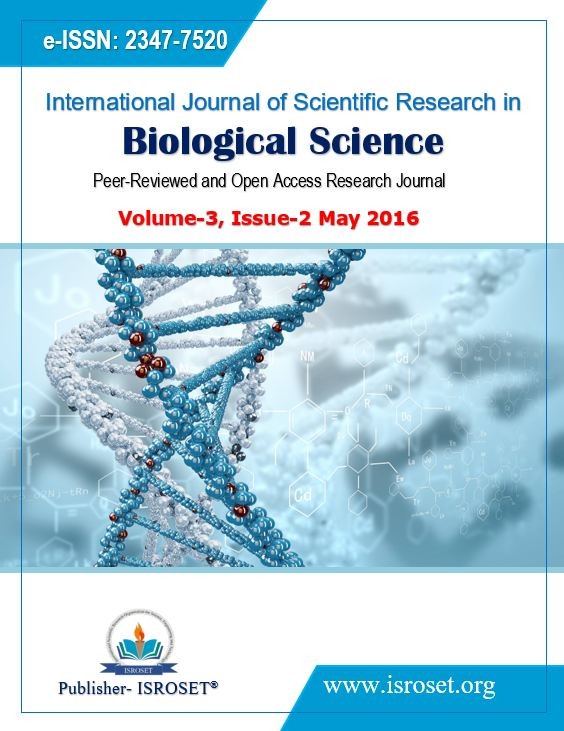Solid Waste and Waste Water Management of Maha Kumbha 2016 at Ujjain, M.P., India
Keywords:
City Development Plan (CDP), Bio Medical Waste (BMO), Environmental Management Plan (EMP), Municipal Solid Waste (MSW)Abstract
Water and waste management is mainly a topic of global concern. For every city development plan (CDP) we have to make a good strategy for strong water. An action plan is required with initiative in protecting this areas. Anyways the technology support is essential for solid waste management (SWM). Rapidly growing population of most cities in India has contributed to solve the problems of waste management. Dumping the Solid Waste into river is one of the secondary product of human activities which become the obstacle for the river to provide raw drinking water or to run the function as drainage system and flood control. We are finely known as Kshipra is most Holy River of the state. Simhasth Kumbh Mahaparv” is one of the four “Kumbh Melas” celebrated by largest spiritual mass gathering on the Earth. In Simhasth Kumbh Mahaparv it is fulfilled by holy bath in the sacred river Kshipra in ancient and religious city Ujjain (Madhya Pradesh).Simhasth Kumbh Maha Parva is based on the the Zodiac Signs and lining-up of Planets, which occurs every 12 years. “Kumbh” in its literal English translation means “Pot”, which emerged from”Samudra Manthan” fight between Gods and Devils. The term ‘Mela‘signifies’Fair‘. In city like Ujjain the main source of waste generation is from households, hotels, temples and market. Solid waste generated in civil area is not segregated into biodegradable and non-biodegradable category. Waste is collected daily in the morning hours in open trolleys tractors. It is dumped together and burnt immediately along with Bio Medical Waste from hospitals. After burning ash remains as it is at the disposal site. Only three stages of any waste management system are used in Ujjain i.e. collection, transportation and disposal. It should be very necessary to make a special Environmental Management Plan for Simhasth. This study is very helpful in analyzing data & information related to ongoing Solid Waste Management system. To suggest suitable technology and methods for safe disposal of Municipal Solid Waste & minimize the risk of environmental threats of the poor Solid Waste Management. Solid Waste ....
References
APHA, Standard methods for the examination of water and wastewater, American public health association, water works association and water Pollution control federation, 19th Washington, DC, (1998).
IS: 3307-1977, Tolerance limit for industrial effluents discharged on land for irrigation Purposes, ISI (Indian Standard Institute), New Delhi (1997).
Ali M. and Tiwari T.N., Indian J. Env. Prot., 8 (5), 338-341 (1988).
Kanase D.G., Jadhav S.D., Jawale R.W. and Kadam M.S., A study on some physicochemical characteristics of flowing water of major rivers in Pune city, Proceedings of 2nd ICCE (2005).
WHO, Guidelines for drinking water quality; World Health Organisation, Geneva, Switzerland, (1993).
Sharma O.P., Bangar K.S., Jain R. and Sharma P.K., Res. J. of Chem. Environ,(2004).
Waste Management (2013). "Editorial Board/Aims & Scopes". Waste Management IFC. doi:10.1016/S0956-053X(14)00026-9
National Waste & Recycling Association. "History of Solid Waste Management". Washington, DC.
"Environment Assessment, Country Data: India". The World Bank. 2011 https://india.gov.in/ujjain-city-development-plan-ujjain-municipal-corporation
scholarsresearchlibrary.com/aasr-vol3.../AASR-2011-3-1-450-461.pdf
Downloads
Published
How to Cite
Issue
Section
License

This work is licensed under a Creative Commons Attribution 4.0 International License.
Authors contributing to this journal agree to publish their articles under the Creative Commons Attribution 4.0 International License, allowing third parties to share their work (copy, distribute, transmit) and to adapt it, under the condition that the authors are given credit and that in the event of reuse or distribution, the terms of this license are made clear.







